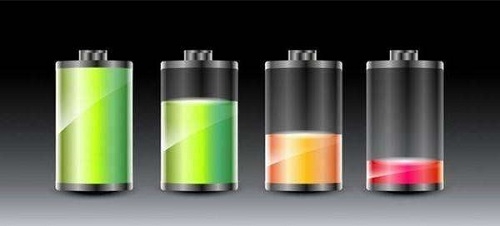Lithium-ion batteries are the driving force of electronic products. If the battery consumption of electronic products is too large, the battery life of electronic products will be greatly reduced. Many users complain that the battery life of their electronic products is too short. If they are used for a long time, the battery life of the lithium-ion batteries of electronic products will be relatively weakened. The common problem of lithium-ion batteries in daily use is power loss. The more exhausted, the greater the battery loss.

Why does the Why does the lithium ion battery capacity lose?
Lithium-ion batteries start to wear out from the moment they leave the factory. This is due to the chemical nature of the lithium-ion battery, that is, the internal active material will continue to reduce its activity over time, and the part that gradually becomes no longer active will be lost The purpose of storing electrical energy. The reason for the attenuation of lithium ion batteries is that lithium ions will react with the electrolyte during the movement process, so the lithium ions must be lossy. Of course, the performance of lithium ion batteries will decrease with the increase of the number of charge and discharge, which is normal of.
Self-discharge refers to the phenomenon of natural loss of the capacity of the battery in the unused state. One is the reversible capacity loss, which means that the lost capacity can be recovered during charging; the irreversible capacity loss is the opposite. The electrolyte has a side reaction, and lithium ion insertion and extraction occurs. The lithium ions inserted and extracted from the positive and negative electrodes are only related to the lithium ions of the electrolyte. The positive and negative electrode capacities are therefore unbalanced. This capacity loss cannot be recovered during charging.
Lithium-ion batteries move in different directions during charging and discharging. Lithium ions emit electrons when they move, but lithium ions will react with the electrolyte during the movement, so that lithium ions will have certain losses. With the increase in the number of charge and discharge, the number of lithium ions will become less and less, so that the performance of the battery will decline. If you want to solve the problem of lithium ion battery attenuation, you must develop a new electrolyte to prevent lithium ions from reacting with the electrolyte.
If the lithium-ion battery is not used, the battery itself will consume power, so this process will also cause aging and oxidation and increase the internal resistance. In addition, the battery itself is relatively sensitive to the external environment. Changes in temperature, humidity, own power, and oxidation will cause changes in internal lithium ions. As long as it is not in a completely static state, loss is inevitable.
Can the power loss of the lithium ion battery be repaired?
Low temperature can change the electrolyte inside the lithium-ion battery, and promote the chemical reaction of the battery that has just been frozen. Put the lithium-ion battery in a low-temperature environment, the microstructure of the lithium film and electrolyte on the surface of the lithium-ion battery, and their interface will change significantly, resulting in temporary inactivity inside the battery and reduced leakage current.
The old mobile phone lithium-ion battery that has run out of power is wrapped tightly with plastic wrap. There are three layers inside and outside to ensure that the battery is in a vacuum. Then, wrap three layers of newspapers outside the plastic wrap to completely seal the lithium-ion battery. Put it in the frozen layer of the refrigerator. After 48 hours, remove the battery and remove the six layers of paper film that are wrapped around. The lithium-ion battery has no surface expansion or deformation due to freezing. After cooling for a while, then charge.
Lithium-ion batteries that are nearly scrapped are completely discharged, and then recharged to activate the battery. The specific method is to deeply discharge the mobile phone, to achieve a deeper recharge by exhausting the internal power, and connect the mobile phone with a small low-voltage light bulb with a specific device. The power inside the battery will be transferred to the small light bulb until it is completely discharged. Under normal circumstances, the phone will automatically shut down if it is lower than the rated voltage of 3.6 volts after being connected, and the battery of the phone that is recharged after being discharged can be used for a longer time.
By repairing, the capacity of the battery can be restored, the service life of the battery can be extended, and the performance of the battery can be improved. The loss of lithium-ion batteries used for a long time is inevitable, and the loss rate is as high as 30-40%. It is not recommended that users who buy new electronic products use deep discharge to restore the battery capacity of electronic products. In fact, the loss of the battery within 10% does not affect normal use. This method of deep discharge can be used when the battery has been used for a long time, the battery loss is large, and the endurance is significantly shortened.



